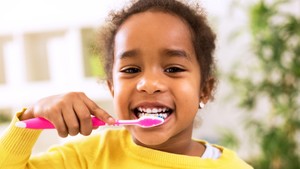Blog
Maintaining good oral hygiene is vital for overall dental health, and a key part of this is regularly replacing your toothbrush.
Maintaining good oral hygiene is vital for overall dental health, and a key part of this is regularly replacing your toothbrush. But how often should you change your toothbrush? Let’s explore some important factors to consider.
Signs That You Need to Change Your Toothbrush
Knowing when you should replace my toothbrush is crucial for effective dental care. Here are three clear signs that it’s time for a new toothbrush:
- Frayed or Worn Out Bristles: Over time, the bristles on your toothbrush can become frayed or worn out due to regular use or brushing too hard. If the bristles are no longer straight and firm, it’s a sign that your toothbrush is no longer effective at removing plaque and food particles, which can lead to dental issues.
- Discolored Bristles: When the bristles of your toothbrush start to change color, it’s an indication of bacteria buildup. Discolored bristles, which may turn yellowish or brownish, can be harmful to your oral health. In such cases, it’s best to replace your toothbrush to ensure proper cleaning.
- Three to Four Months of Use: How often should you change your toothbrush? As a general guideline, it’s recommended to replace your toothbrush every three to four months. Over time, the bristles wear out and become less effective. By regularly replacing your toothbrush, you ensure that it remains an effective tool for maintaining good oral health.
At Leap Kids Dental, we understand the importance of using the right toothbrush for your child’s dental care. We offer a range of age-appropriate toothbrushes designed to make brushing fun and effective. Visit our website to explore our options and ensure your child’s dental health is in good hands.
How Long Do Toothbrushes Usually Last?
Understanding the lifespan of a toothbrush is essential for maintaining good oral hygiene. Several factors can influence how long a toothbrush lasts.
Firstly, the frequency of use and the pressure applied during brushing significantly impact the lifespan of a toothbrush. Brushing more vigorously or more frequently than the recommended twice a day can cause the bristles to wear out faster.
The type of toothbrush also plays a role. Manual toothbrushes generally last about three to four months, depending on the quality of the bristles and how well you take care of the toothbrush. If the bristles become frayed or splayed before the three-month mark, it’s time to replace your toothbrush.
Electric toothbrush heads usually have a shorter lifespan compared to manual toothbrushes. On average, they should be replaced every three months. Some electric toothbrush models come with indicators that change color or fade over time to remind you to replace the brush head.
Regularly replacing your toothbrush or toothbrush head ensures that the bristles are in optimal condition to effectively remove plaque and bacteria from your teeth and gums. Using a worn-out toothbrush can be less effective and may even cause damage to your teeth and gums.
So, when should I replace my toothbrush? How often do you replace your toothbrush? Stick to the three to four months rule to maintain good oral hygiene.
Choosing the Best Toothbrush
Choosing the right toothbrush is crucial for maintaining a healthy smile. With so many options available, it can be overwhelming to decide which toothbrush is best for you and your child. Here are some factors to consider when selecting a toothbrush:
One important factor is the type of bristles. There are typically three types: soft, medium, and hard. Dentists recommend soft bristles as they are gentle on the gums and teeth while effectively removing plaque and debris. Medium and hard bristles can be too abrasive and may cause damage to the enamel and gums.
For children’s toothbrushes, additional considerations are necessary. It’s crucial to choose a toothbrush specifically designed for children, as their teeth and gums are more delicate. Look for toothbrushes with smaller heads and soft bristles that can easily reach all areas of their mouth.
Other features can enhance oral hygiene, such as ergonomic handles that provide a comfortable grip and make brushing easier. Some toothbrushes come with built-in timers or reminders to ensure you brush for the recommended two minutes, which can be especially helpful for children.
Remember, regularly replacing your toothbrush is just as important as choosing the right one. How often should you change your toothbrush? Replace your toothbrush every three to four months, or sooner if the bristles become frayed or worn. By selecting the best toothbrush for you and your child’s needs, you can maintain optimal oral hygiene and keep your smiles healthy and bright, and don’t forget to keep up with regular appointments with your pediatric dentist.





